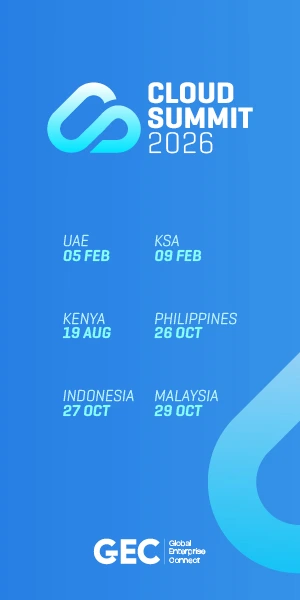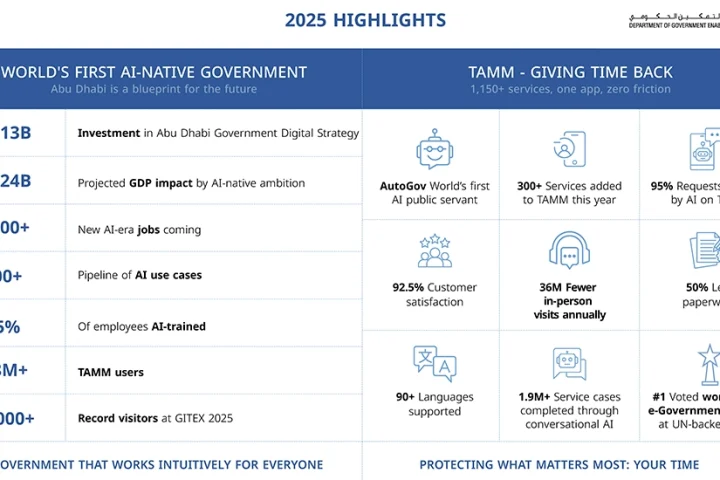How do you tailor your solutions to meet the unique needs of different international markets, such as the UAE and the Middle East?
Today, about 50% of our revenue comes from outside the US. We are generating between $6.5 and $7 billion in revenue on an annualized basis. We are at the highest point we’ve ever been in terms of company valuation. Our intellectual property is in software, but we deliver it through systems, cloud services, and other means for our clients. We have about 12,000 employees around the world, including teams in the UAE and other parts of the Middle East. We serve large organizations in these economies, including the public sector, various government entities, large oil and gas companies, utilities, financial services, and healthcare providers—similar to our business mix in other parts of the world.
Our strength lies in what we call intelligent data infrastructure, which is a combination of both systems and software that makes it easy for clients to organize their data, access it for any application or data type, and use it to drive business progress. Over the years, we’ve seen the advantage of data-driven organizations. Independent studies by leading business consultancy firms consistently show that companies that know how to harness their data are growing faster and operating more efficiently. This trend is accelerating, as tools to analyze data are becoming more powerful. You can now analyze more types of data more efficiently than ever before.
We are now in the third era of data. The first era was about recording data—people needed computers to digitize their data, which led to data processing via mainframe computers, such as those used by banks to record transactions. The second era focused on maintaining a historical record, like keeping longitudinal health records to track a person’s health over time. Today, we are in an era of unifying all data to gain deeper insights. In healthcare, for instance, this means not only looking at an individual’s health but also correlating it with broader population data and environmental factors to determine if external conditions contribute to health issues. Genetic research, for example, can now identify predispositions to certain conditions, which is another form of unifying data.
You mentioned that data is the biggest challenge in AI because there’s a gap between AI environments and data environments. How are you bridging the gap between data and AI?
Yes, I think we’ve spent a lot of time working with clients who are looking to use AI tools, especially since the AI market has grown since 2017-2018. We have hundreds of customers already using AI with our technology, and we’re also actively involved in early trials around the use of generative AI. While there has been significant emphasis on improving AI models—which is important—what we’ve found, based on our discussions with customers, is that models without your corporate data make those models much less relevant and useful to a business.
So, to deliver real value from AI to a business or organization, it’s critical to connect the models with your data. However, this comes with several challenges. Data is constantly changing, often fragmented across the enterprise, and obtaining a unified view of it is complex. It’s also important to version your data just as you version your models, so you can explain to your customers how the model was built and trained.
What we’ve noticed, and what other industry participants have also shared, is that about 80% of the time spent in the AI workflow is focused on data. What we’re doing is building a set of software capabilities to make it much easier to first explore the data you have, select the right data for use with AI models, synchronize model and data versions, and ensure privacy and security are well controlled as AI is implemented.
A lot of corporate data is unstructured. So how do you help your clients collect and analyze this data to leverage AI tools?
In the corporate world, a significant portion of data—about 85%—is unstructured. Unstructured data includes documents, videos, emails, PowerPoint presentations, and other forms of communication. Historically, this unstructured data was not included in a company’s analytical capabilities. For instance, organizations would analyze structured data, such as customer transactions and call center interactions, but they wouldn’t integrate this with unstructured data like emails sent by account managers. As a result, organizations couldn’t gain a complete understanding of their customer interactions.
Generative AI is changing that. Now, we can access and analyze unstructured data, allowing customers to gain a fuller understanding of their operations. For example, we’ve used generative AI to enable customers to perform natural language searches on all of our technical documentation. Instead of reading through countless documents, customers can query the information in plain English—or other languages—which is a powerful tool.
For many years, we have pioneered unified data storage, unifying any type of data for any application, anywhere. We’ve also added intelligent services to protect data, quickly catalog it, and track where all of it is stored, enabling AI models to use this data while maintaining privacy. For instance, our services can identify sensitive data that should not be used in certain models, or mask data elements to ensure privacy.
Looking ahead, we see significant opportunities. We’ve already built a bridge between customers’ data centers and the cloud, enabling a seamlessly integrated hybrid, multi-cloud model. Today, we see similar opportunities to bring AI to your data, without the need for a separate AI environment. We’re excited to be here in the UAE, recognizing both the ambition of the country’s leadership and the talent pool in the customer base and industry. That’s why we’re here, and we plan to invest more in this region.
What types of opportunities do you envision in the Middle East market?
I believe the characteristics of this market align with where we’ve seen success in other parts of the world. There is a sophisticated customer base that understands the value of technology and digitization. The public sector, state-owned enterprises, and major industries here—such as oil and gas, financial services, and healthcare—are sectors where we have performed exceptionally well globally. Given our success here to date and the current market trends, we believe there is a strong opportunity for growth.
























